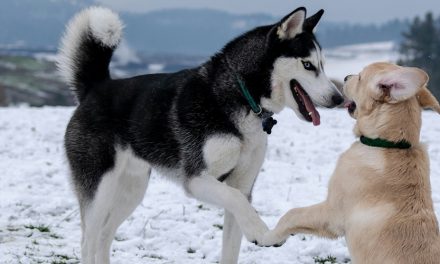Dog training is a multifaceted process that extends beyond merely teaching commands and tricks.
Central to effective training is understanding the behavioural aspect of canines, which shapes how they respond to various stimuli and interactions.
By tapping into fundamental canine behaviors and instincts, trainers can foster a more positive learning environment and stronger bond with their pets.
Understanding Canine Behaviour
Dogs are highly social animals with a rich array of instincts that influence their behaviour.
Their natural tendencies, shaped by evolution and domestication, manifest in how they communicate, learn, and adapt to their environments.
Recognizing these behaviours is crucial for any trainer.
1. Social Structure:
Dogs are pack animals and thrive on hierarchy and social order.
Understanding this aspect helps trainers establish themselves as leaders, which is vital for effective training.
When dogs perceive their human as a confident leader, they are more likely to respond positively to commands and training exercises.
2. Communication:
Dogs communicate primarily through body language.
Tail wagging, ear position, and vocalizations all convey emotions and intentions.
To train a dog effectively, it’s essential to not only give verbal commands but also to read and respond to their body language.
Recognizing when a dog is relaxed, anxious, or excited can help trainers adjust their techniques accordingly.
3. Instinctual Drives:
Common instinctual behaviours include predatory instincts, guarding, and herding.
These drives can be redirected positively during training.
For instance, a dog with a strong prey drive could be engaged in games that allow them to chase and retrieve in a controlled manner, channeling their energy productively.
Positive Reinforcement
One of the most impactful strategies stemming from behavioural understanding is positive reinforcement.
This approach involves rewarding desired behaviours rather than punishing unwanted ones.
Research suggests that positive reinforcement is not only more effective but also builds trust between the dog and trainer.
Rewards:
These can take various forms, including treats, praise, or toys.
The key is to ensure that the reward is desirable for the dog.
For instance, some dogs may respond better to social praise, while others may be more motivated by food or playtime.
Timing:
Effective reinforcement requires timing.
Rewards should be given immediately after the desired behaviour to help the dog associate the action with a positive outcome.
This immediacy reinforces the learning process and enhances retention.
The Role of Environment
The training environment plays a significant role in shaping a dog’s behaviour.
Distractions can hinder learning, while a calm, controlled environment fosters focus.
Over time, as dogs master commands in quieter settings, they can gradually be exposed to more distractions.
1. Consistency:
Consistency in commands, rewards, and routines is vital. Different cues for the same behaviour can confuse dogs, leading to frustration for both trainer and pet.
2. Gradual Exposure:
Start training in a familiar environment before introducing new locations and distractions.
This gradual exposure helps dogs generalize commands and behaviours across different contexts.
Addressing Behavioral Issues
Understanding behaviour is also essential when addressing common behavioural issues such as anxiety, aggression, and excessive barking.
These issues often stem from fear, lack of socialization, or unmet needs.
Desensitization:
For dogs that show signs of fear or aggression, desensitization is a useful technique.
This involves gradually exposing the dog to the trigger in a controlled way, allowing them to build confidence over time without feeling overwhelmed.
Socialization:
Early and regular socialization helps prevent many behavioural problems.
Exposing dogs to various people, environments, and other animals in a positive manner encourages adaptability and reduces fear-based reactions.
Conclusion
The behavioural aspect of dog training is integral to fostering a harmonious relationship between dogs and their owners.
By understanding canine behaviour, employing positive reinforcement, and creating suitable training environments, trainers can enhance their effectiveness and strengthen the bond with their furry companions.
Ultimately, training should be a journey of mutual learning, leading to a well-adjusted and happy dog.









